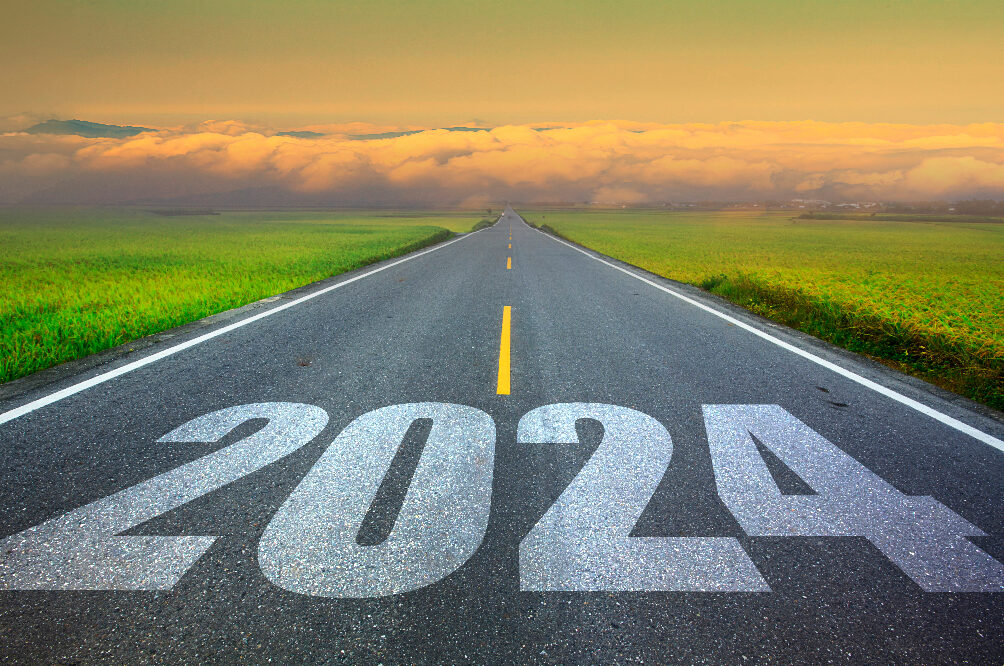The next twelve months are forecast to continue to be challenging economically and politically (continuing the theme of 2023, see here), with many companies having to cut their budgets but, at the same time, not compromise productivity levels.
Consequently, says Jo Yarker, Managing Partner, Affinity Health at Work, “the tenets of good work are ever more important; as people continue to face challenges outside of work, their capacity to cope with challenges in work is depleted”.
At the same time, there is a continuing labour shortage in the UK – 9.7% of businesses reported experiencing a worker shortage as of October 2023, according to Statista – also making workplace wellbeing, alongside good work design, crucial.
We asked industry experts for their predictions of the most important trends for next year including Dame Carol Black, Sir Ian Cheshire, SUEZ’s Chief Business Services Officer Dr Tracey Leghorn and AON’s Principal Strategic Wellbeing Consultant Jeanette Cook, and more.
NB: There are three major 2024 trends not included in this piece because we will cover them in depth in January 2024. These are:
- How to Achieve High Performance in a Difficult Market without Compromising Wellbeing
- The Rise of Occupational Health
- The Growing Intersectionality of DEI and Wellbeing
1. Things are going to get worse before they get better when it comes to workplace wellbeing
Yarker predicts that “wellbeing leads are going to have to work harder to maintain their budgets as companies are tightening spend and many continue to grapple with rising costs and a downturn in revenue”. She speculates that employees will need and seek more support and suggests that leaders in particular will need “support managing redundancies and restructures in a compassionate way.”
Amy McKeown, Workplace Health, Mental Health and Wellbeing Strategist, forecasts, too, that many organisations will use 2024 as a year to take stock and redesign their wellbeing strategies, saying “I have seen this already happening”. Ultimately, however, the silver lining is that this reflection time will lead to “movement into more strategic approaches” and using rigorous frameworks like ISO 45003.
2. 2024 will be the ‘Year of the Middle Managers’
This prediction comes from AON’s Principal Strategic Wellbeing Consultant Jeanette Cook.
“Middle managers are the ones, when you look at any of the surveys over the last year, who are caught with the most hats to wear,” says Cook. “We need to train them up. We have an education gap in middle management. They are also the highest stress group. But also the ones responsible for keeping organisations going.”
Consequently, companies need to equip middle managers better, which means helping them look after themselves so they can then look after others.
“Then they can be true ambassadors for the company and set the tone for the culture. The value of these middle managers is really going to come to the fore in 2024 and organisations must ensure they are enabled to have those brave, timely conversations with employees,” says Cook.
3. Companies will recognise that the key to improving workplace wellbeing lies in culture, leadership and management behaviour
“This needs to start with managers recognising the impact they have on employee wellbeing and taking steps to weave wellbeing into the everyday workflow, rather than relying on band-aid initiatives which might treat symptoms, but do nothing to address root causes,” says Janet Ahn, PhD, Chief Behavioral Science Officer & US President, MindGym.
Focusing on five key psychological drivers of wellbeing – certainty, competence, autonomy, belonging and purpose – will have much more impact than any ‘add-on wellness programme’, says Ahn (this is on the back of its research and white paper on ‘Wellworking; how to make us all better at work’).
“This will have more impact on employee wellbeing partly because they reach all employees inclusively, not just the few who sign up for yoga or meditation classes,” she says.
4. Big data will get bigger and bigger in importance
A decade ago wellbeing largely couldn’t be (or wasn’t) measured. Now data is much more robust and impact can be measured and proved much more effectively. Big data will continue its ascendency particularly in the decision making process.
“Until you know what interventions are being used and where the gaps are it’s hard to inform how to consolidate your wellbeing package,” says AON’s Cook. “Wellbeing professionals will increasingly pull the threads of data together and interpret them, which will be really powerful.”
“Identifying the data to gather before analyzing, to use this data effectively for storytelling, for business case building for enhancing trust will continue to be a focus,” says Sharon O’Connor, Global Lead Employee Wellbeing, Novartis.
Arti Kashyap-Aynsley, Global Head of Wellbeing and Inclusion, Ocado, adds that she hopes 2024 will be the year that the industry comes together and identifies some “specific metrics that every organisation looks at and reports on so we start to create a level of consistency”, adding that the CCLA’s work on this front has been a positive of 2023 (see this article for more).
Dame Carol Black, too, has high hopes that 2024 will be the year of “evidence-based solutions” which she believes we have been “short on” in 2023. “We know a great deal about inputs, but are less good on outcomes and impact,” she says.
5. The rise of AI
Many wellbeing leads will be taking a serious look at AI in 2024 assessing its impact on the function and how this could look. One already doing this is Dr Leghorn:
“AI is going to be really important because it plays into so many areas of Wellbeing, whether that’s job roles or social interaction. I’m looking across my portfolio and asking what the future is going to look like and how we can use AI as a business tool to move forward. I predict big societal change from AI.”
Sir Ian Cheshire agrees this will be a top trend, adding he is ultimately optimistic about AI’s potential in wellbeing:
“The rate of technological advance in 2023 was breathtaking but in 2024 we will see the first large scale use cases at work, with both the promise to make work more interesting and yet simultaneously make other jobs disappear. The reality of change is that both are true and business will as ever evolve, but I believe the ultimate impact will be beneficial in terms of productivity and new roles, even if leadership will have to support teams through these changes.”
Dr Wolfgang Seidl, Partner & Workplace Health & Consulting Leader UK & Europe, Mercer Marsh Benefits, too, sees huge potential, but adds a couple of caveats:
“AI is a useful tool to make healthcare more scalable, and in some cases, more accurate. Balancing technology with empathy will be essential to get this right. Employers need to ensure that AI is used to widen participation and not hinder it, which means offering additional access routes for colleagues who do not wish to interact with AI but humans.”
6. A Focus on ‘Boundaries and Banter’
Another area of focus for 2024 at SUEZ is going to be “boundaries and banter”.
Dr Leghorn plans to open up a conversation about banter, which she believes can be really good for wellbeing and can help people in stressful situations. However, it’s increasingly recognised that there should be boundaries around banter too.
“What I don’t want to do is move to a zero tolerance situation where someone who says the wrong thing ends up being disciplined,” she says. “I want to gently move into this space in 2024 and give people the skills to be abel to say in a non aggressive, non confrontational way that they didn’t feel comfortable with a comment, for example.”
The ideal scenario for her would be employees increasingly understanding why some banter could be offensive to certain colleagues and be able to have an open, clear conversation about it in order to move forward positively.
7. More 4 Day Weeks?
The results of the world’s biggest 4 Day Working Week pilot, which took place in the UK, were revealed in February 2023 and 2024 looks set to see more companies take this leap permanently; of the 61 companies that participated, at least 56 are continuing with a 4 Day Week post pilot, with 18 saying the policy saying is a permanent change.
As Sir Ian Cheshire says, in 2023 we saw various attempts post Covid to define the ‘new normal’ of hybrid working with all sorts of models from three days in the office, to compulsory Mondays to team meeting days. He predicts:
“In 2024 this will settle down into something approaching a 4 day week model, but with understanding of both the value of flexibility for colleagues and the importance of face to face time for developing skills, and enhancing creativity.”
He adds that, regardless of the hybrid model chosen, all employers will “need to provide better and healthier office experiences to encourage people to stay connected”.
8. More stigma smashing still required
Here at Make A Difference Media we strive to start, and fuel ongoing, important conversations in the workplace around wellbeing, particularly on topics that have been difficult to talk about.
While conversations are now openly had around previously taboo topics like menopause, depression and sexual orientation, as BAM’s Head of Workplace Wellbeing Ruth Pott says, there is still much more work to be done.
As she says:
“We need to challenge the stigmas on subjects like miscarriage and baby loss, infertility and sexual health. These are deeply personal matters, especially the grief that goes with the first two, for both men and women. We as employers need to understand the issues and better support our colleagues, along with their families.”
Like Pott, it’s a mission we are committed to in 2024 and beyond.












